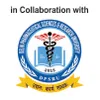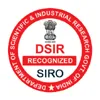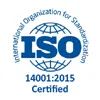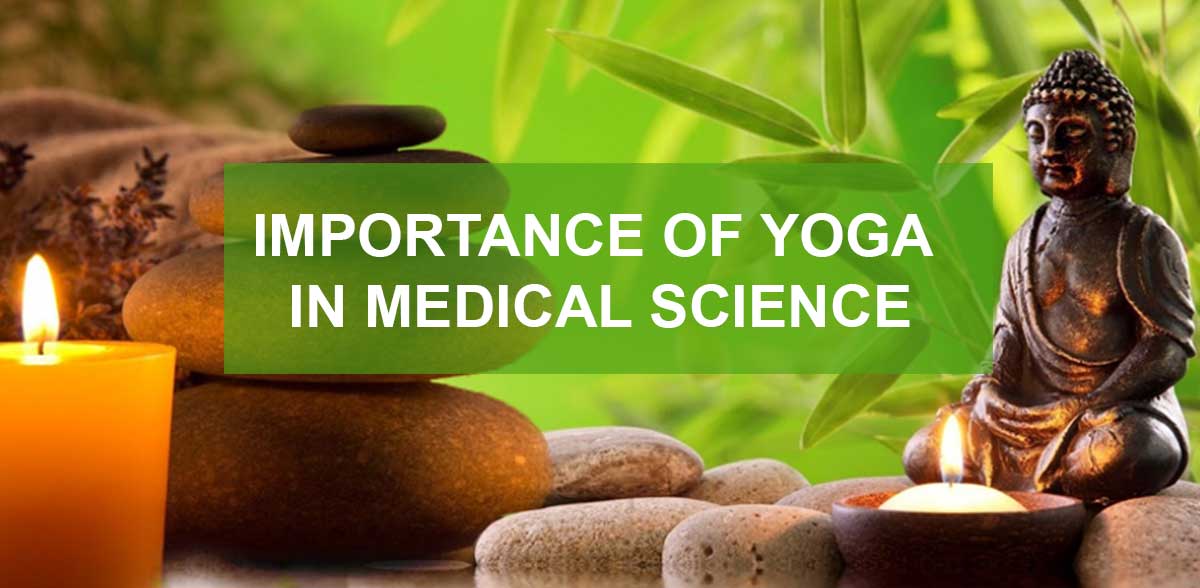“yuvaa vrddho ativriddho vaa vyaadhito durbalo pi va aabhyaasaat siddhimaapnoti sarvayogeshvatandritah-Hathayoga Pradipika” in other words
“One who tirelessly practices Yoga attains success irrespective of whether they are young, old decrepit, diseased or weak. Yoga improves health of all alike and wards off disease, provided we properly abide by the proper rules and regulations”
Yogi Swatmarama in the HathayogaPradipika
The term YOGA hails from the Sanskrit word “YUJ” which literally means “to unite” or “to join”. Yoga is an art and science of healthy living which focuses on striking a harmony between mind ,body and soul, gradually encompassing all walks of life. This is one of the oldest sciences which has roots in INDIA and is useful in preserving not only physical and mental well being but also spiritual evolution. Mythologically Lord SHIVA was considered as the first yoga teacher.
Read Also - Things to Know before Choosing Pharmacy as a Career
EVOLUTION OF YOGA
Evidences suggest that the yoga has been practiced since ancient times and has evolved in different forms in different ages .However ,the currently practiced modern yoga is much different from the original form yet the founding principles and the health benefits remain the same. The evolutionary stages of yoga have been identified as:
Pre-vedic period (Before 3000 BC): Depictions of yoga postures have been found in the excavations at Harappa and Mohenjo-Daro indicating that yoga was practiced at that time. Vedic period (3000 BC to 800 BC):Vedic yogawas very close to the definition of yoga i.e. union of the individual self with the supreme self. During this period yoga practice was a ritual to develop concentration and to transcend.
Preclassical (Upanishad) period (800 BC to 250 BC): The yoga practice mentioned in Upanishads, Mahabharata and the Bhagavad Gita. The different forms of yoga mentioned in Bhagavad Gita include: Jnana yoga, Bhakti yoga, Karma yoga and Raja yoga. Yoga was more of life style rather than breathing or a posture-related practice.
Classical period(184 BC to 148 BC): During the classical period, Patanjali compiled 195 sutras (aphorisms) of yoga into a more concise form. Patanjali’s view on yoga is known as RajaYoga. It has the classical eight limbs: Yama (social conduct), Niyama (personal conduct), Asana (physical postures), Pranayama (breathing regulation), Prathyahara (withdrawal of senses), Dharana (concentration), Dhyana (meditation) and Samadhi (transcendence). Though Patanjali added physical postures and breathing regulation to yoga, they were used only as practices secondary to Dhyana and Samadhi. Patanjali’s sutras do not name any asanas or pranayama.
Post classical period (800 AD to 1700 AD): During this age, followers of Patanjali yoga gave yoga a new outlook by giving greater importance to the asanas, kriyas and pranayama, for cleansing of the body and mind. The purification of body and mind inturnhelped practitioners reach higher levels of practice, like Samadhi. This form of yoga is called hatha yoga.
Modern period (From 1863 AD onwards): Yoga was introduced to the rest of the world by Swami Vivekananda when he mentioned it in his historic speech at the Parliament of Religions in Chicago. Many yogis like Maharishi Mahesh Yogi, ParamahamsaYogananda, Ramana Maharishi, etc., influenced the western world profoundly through their spiritual accomplishments and gradually yoga was accepted throughout the world as a secular spiritual practice rather than a ritual-based religious doctrine.
In recent times, T.Krishnamacharya trained three disciples, BKS Iyengar, PattabhiJois and TVK Desikachar. These yoga masters have popularized yoga globally.
Read Also - Best Career option after Completing D. Pharm in India
TYPES OF YOGA:
Traditionally there are four different types of yogas.
Karma yoga : Uses physical actions to achieve union
Gnanayoga : To use ones intellect to transcend the physical and reach the ultimate union
Bhakti yoga : Achieving union through emotions
Kriya yoga: Using internal energy to accomplish union.
Besides there are different styles of yoga :
Ashtanga yoga: A set series of poses connected to breath
Bikramyoga : 26 poses performed in hot room
Hatha yoga : Classic yoga performed at moderate pace
Iyengar yoga : A practice based on excellent alignment with the help of props.
Restorative and yin: Slow yoga aimed at calming the nervous system and relaxing muscles and connective tissues.
Vinayasayoga: Flowing sequences with emphasis on breath, sometimes set to music.
Yoga practice is much beyond mere physical exercise rather it leads to holistic healing and restoring of body homeostasis hence prevention of disease and disorders. Yoga promotes healing, health, and longevity .Yogis residing in Himalayas are a perfect example who not only survive but live for 100s of years under all adversities and scarcities purely on the basis of yoga sadhna. The therapeutic potential of Yoga has been accepted and admired by modern medicine practitioners so much and so well that many of them have switched over from modern medicine practice to traditional yoga for healing. Recently WHO has included the concept of ‘spiritual health’ , an integral component of yoga ,in its definition of “ State of health “ and has accepted the fact that yoga can help in improving the quality of life throughout the world.
Yoga has a scientific system of etiology, diagnosis and pathogenesis of disease. The science of Yoga views the body to be made up of the PanchaKoshas (the five sheathed existence) comprising of the physical body ,an energy body, a mental body, a body of wisdom and a body of eternal bliss with physiological functions being regulated by Nadis, Chakras and Bindus. The Yogic lifestyle that includes the Yama and Niyama can help prevent many of the modern diseases like Hepatitis B and AIDS. Cleanliness or Sauchacan help prevent and limit the spread of contagious and infectious diseases. Mental peace and right attitudes of Yoga such as PratipakshaBhavanam (taking the opposite view), Samatvam (equanimity of mind) and Vairagya (dispassionate detachment) can help prevent many of the psychosomatic ailments prevailing worldwide. By inculcating Yogic values as well as practices such as Asanas, Pranayamas, Kriyas and Dhyana in the modern human race, we can prevent all diseases. Yoga is an excellent tool of promotive health that can enrich modern medicine. The practice of Yoga leads to the efficient functioning of the body with homeostasis through improved functioning of the psycho-immuno-neuro-endocrine system. A balanced equilibrium between the sympathetic and parasympathetic wings of the autonomic nervous system leads to a dynamic state of health. Yoga aims at enabling the individual to attain and maintain a dynamic sukhasthanam that may be defined as a dynamic sense of physical, mental and spiritual well being.
Yoga therapy is being used both in conjunction with modern medicine or alternative systems of medicine as well as on its own in various centers. Yoga through its asanas and pranayamais widely applied in the treatment of psychosomatic disorders and in stress related disorders such as diabetes, asthma, irritable bowel syndrome, epilepsy, hypertension, back pain and other functional disorders. Yoga has been found to reduce and in some cases eliminate drug dosage and dependence in patients suffering from diabetes mellitus, hypertension, epilepsy, anxiety, bronchial asthma, constipation, dyspepsia, insomnia, arthritis, sinusitis and dermatological disorders. Yoga as a physical therapy has been successfully applied in rehabilitation of patients with physical ,mental and musculoskeletal disorders. In patients suffering from drug and substance abuse Yoga has been found to assist them to get back to a normal life by developing their self-control and will power and also offering them a new philosophy of living. Yogic concept of Mitahara-“eating medium quantity of agreeable foods produces health and wellbeing” has proven beneficial in treatment of dietary disorders. Hatha Yoga and Jnana Yoga relaxation practices help relax the body, emotions and mind. Shavasana has been reported to help a lot in hypertensive patients and practices such as Savitri Pranayama, Chandra Pranayama, Kaya Kriya, Yoga Nidra, AnulomaVilomaPrakriyas and MarmanasthanamKriyaare other techniques of complete relaxation. Through Yoga senior citizenscan retain their mental ability and prevent degenerative disorders such as Parkinson’s disease, Alzheimer’s and dementias. In relation to women health puberty and menopause become easier transitions with the help of Yoga. In pretext of maternity Yoga helps open the joints of the pelvis and hip as well as strengthen the abdominal muscles for childbirth. Subsequently Pranayamas and relaxation techniques help the new mother relax and enjoy the new experience of her life. Post partum introduction of simple practices along with breathing, relaxation and a lot of crawling helpher in becoming normal.
Yoga with its emphasis on a proper and healthy lifestyle i.e. proper Achar (healthy activities on a regular basis), Vichar (right thoughts and attitude towards life), Ahar (healthy, nourishing diet) and Vihar (proper recreational activities to relax body and mind) can be an important means to free the modern world from the pandemic of lifestyle disorders .
The current challenges in health care like cancer, diabetes, osteoporosis, and cardiovascular diseases as well as many incurable diseases such as AIDS can be very well addressed by the holistic healing approach of yoga.
The tradition of Yoga is so perfect that we have to seek ways of expounding it in modern scientific terminology instead of simply evaluating it in terms of current concepts of science. The art and science of Yoga has infinite possibilities for providing answers to most health problems troubling modern humankind. Yoga is a holistic science and must be learnt and practiced with a holistic view.
Om SarveBhavantuSukhinah
SarveSantuNiraamayaah |
SarveBhadraanniPashyantu
MaaKashcid-Duhkha-Bhaag-Bhavet |
Om ShaantihShaantihShaantih ||
If you are looking for Pharmacy Courses such as B.pharm, D. Pharm and M.Pharm you can visit - Lloyd Institute of Management and Technology (Pharm.)







